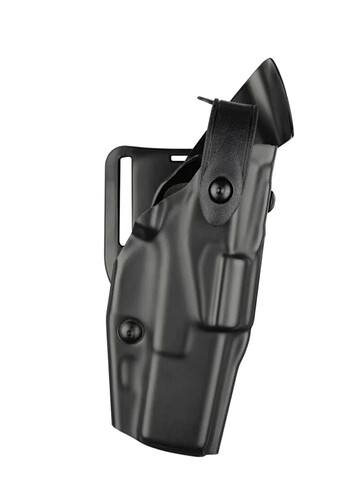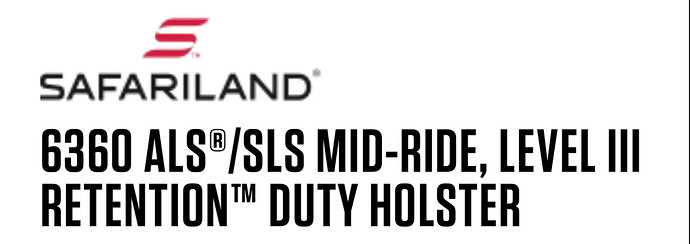I am late to the game, but it seems the confusion began with concealed carry vs. open carry, wherein for concealed carry, a holster that retained the handgun via friction is considered level one, but that is not valid for OC. Here is the purported beginning concept for retention levels:
The holster retention system was devised in the 1970s by Bill Rogers, a former FBI agent and police instructor who started his own holster company, making them specifically for law enforcement use. Each “level” corresponds to a rough amount of retention. Under Rogers’ scheme, a holster had to undergo a test where someone had to try and get the gun out of the holster as if they were trying to grab it away from the officer.
However, the “rating” system is also used to quantify the number of retention devices. Here’s how it works:
- Level One retention holster: a Level One holster has only passive retention; the friction and “hold” of the holster is all that keeps the pistol in it. Most concealed carry holsters are level one holsters. For true Level One retention, the gun should not be able to be pulled free unless drawn correctly, ensuring secure carry but easy access for the carrier/operator.
- Level Two retention holster: a Level Two holster has an active retention device in addition to the passive retention of the holster itself, making for two sources of retention. Commonly, a thumb break, hammer loop or trigger guard lock is the device in question. These are very popular for open carry or law enforcement.
- Level Three retention holster: a Level Three holster has an additional retention device installed. A common design is thumb break or loop in addition to a trigger guard lock. These are also common for law enforcement, and a number of departments nationwide mandate that uniform officers have to carry in a Level Three retention holster.
- Level Four retention holster: a Level Four holster has three retention devices in addition to passive retention for a total of four retention mechanisms. These are much rarer than Level III holsters and are essentially the ultimate in holster retention. No gun will come out of a Level 4 holster except if the wearer means it. Or if someone got out a blowtorch…
Here is another version:
The Original Tests
Rogers’ test was very simple in its original form. A person would don his holstered firearm (using a suitable belt) and ensure all the security devices were properly engaged (snaps closed, straps in position, etc.). An “attacker” would then grab the firearm by the grip while attempting to remove it from the holster by shaking, pulling, and twisting the firearm (as in a gun grab attempt) for a period of five seconds.
The attacker would not try to disengage the security devices (i.e., unsnap a snap), but would try to remove the gun from the holster by pulling it straight up, to the rear, to the front, and away from the body. If the weapon successfully remained in the holster and the holster stayed attached to the wearer, then it was deemed a Level I holster.
If a holster passed this test, then a second test was warranted. This time, the wearer would take the first action required to disengage the primary security device on the holster as part of a normal draw, then leave the holster in that condition for five seconds. For example, if a traditional thumb break-style holster was going to be tested, the wearer would take the first step of unsnapping the thumb break and leave it unsnapped for the test. If the gun stayed in place after five seconds of tugging, then it was deemed a Level II holster. If it came out, the holster remained at Level I.
If a holster required further steps to disable the remaining security devices and complete a normal draw, it would be subjected to yet another five-second attack after the next action in the draw sequence was taken. At the time the test protocol was created, Rogers’ SS3 — later sold by Safariland as the Model 070 SSIII — was the only holster in production that could pass this level of testing.
With this holster, a thumb break (first action) and trigger guard snap (second action) were both released prior to the five-second attack, but the holster’s molded ejection port detent retained the gun in the holster, so it was therefore designated as Level III — the only one of its type for quite some time.
As technology, materials, and designs improved, the Rogers/Safariland system for rating holster retention evolved. Some criteria changed, and additional test requirements were added, (which had to be passed before a holster could even be rated as Level I) but the basic model of identifying how many five-second, Level I-style attacks could be resisted remained unchanged.
By the mid-2000s, Safariland had even introduced the first Level IV and V-designated holsters, indicating they were capable of resisting four or five Level I-style attacks (respectively) as their security devices were disabled step-by-step, in sequence.

